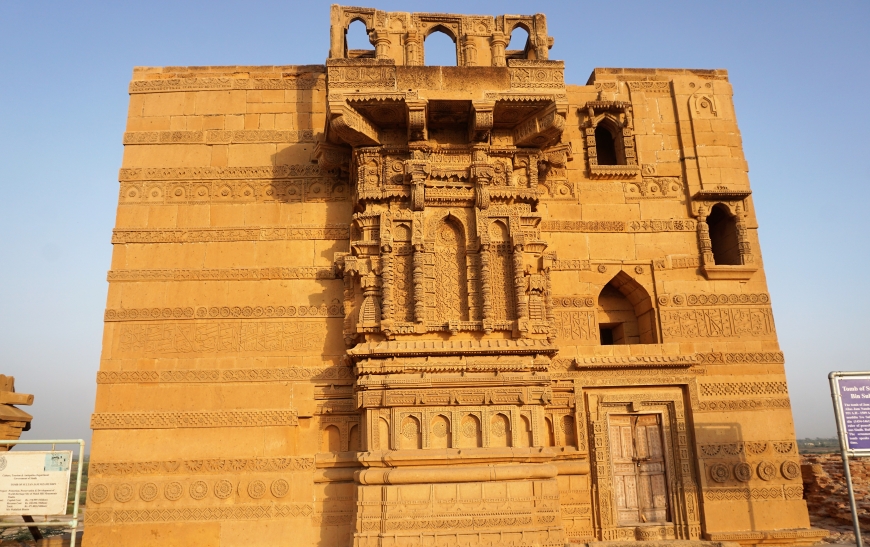
Jám Nizámuddín, also known as Jam Nizam al-Din or Jám Nindó, was the Rajput Sultan of Sindh between 1461 and 1508 CE. He was the most famous ruler of the Samma dynasty, which ruled Sindh, parts of Punjab and Balochistan from 1351 to 1551 CE. His capital was Thatta in modern-day southern Pakistan. The Samma dynasty reached the height of its power during the reign of Nizamuddin, who is still recalled as a hero, and whose rule is considered the golden age of Sindh.
The tomb of Jam Nizamuddin is a stone structure with the finest ornamental carving, akin to fifteenth-century Gujrat style. Its decoration consists of bands of stone carved in relief running around the walls and representing half and full lotuses, arched panels set with sunflower, calling to mind the Muslim buildings around Ahmadabad in Gujrat. A band of excellent interlaced Arabic inscription in Thuluth a verse from the Quran, purely Muslim, seen with a neighboring band of carved geese, entirely Hindu, constitutes a strange combination of contrasting features.
The Hindu-style base, about 19’ in length with carved bands in various designs, has recessed door-like panels. The miniature skhara or temple spires seen at both corners are decorated with the most intricate, detailed, and beautiful carvings. The mihrab inside is also delicately carved and has very finely cut bands of Arabic inscriptions. However, the stonework of this building represents an excellent specimen of essentially Hindu workmanship.
District: Thatta
Visit hours:
Summer: 8:00 AM to 7:00 PM.
Winter: 9:00 AM to 6:00 PM
Location
| Jam Nizamuddin II |
| Thatta, Sindh, Pakistan |